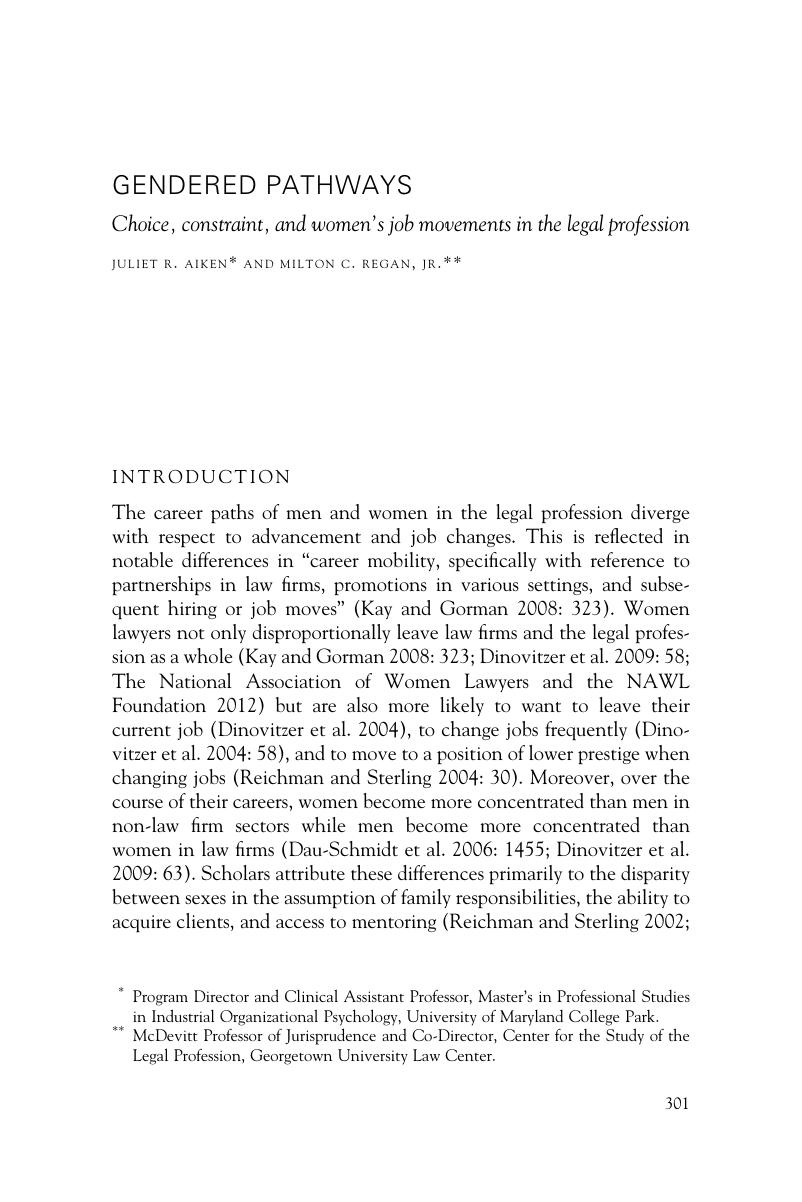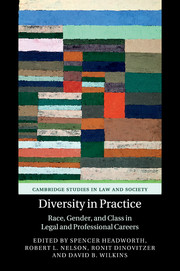Book contents
- Diversity in Practice
- Cambridge Studies in Law and Society
- Diversity in Practice
- Copyright page
- Contents
- Contributors
- Book part
- Introduction
- 1 Rhetoric and realities
- 2 Entering professional careers
- 3 Inequality and opportunity in the careers of diverse attorneys
- Which kinds of law firms have the most minority lawyers?
- Gendered pathways
- The effectiveness of inheritance vs. rainmaking strategies in building books of business for female and minority partners
- Career mobility and racial diversity in law firms*
- Immigrant offspring in the legal profession
- Index
- Books in the series
- References
Gendered pathways
Choice, constraint, and women’s job movements in the legal profession
from 3 - Inequality and opportunity in the careers of diverse attorneys
Published online by Cambridge University Press: 05 April 2016
- Diversity in Practice
- Cambridge Studies in Law and Society
- Diversity in Practice
- Copyright page
- Contents
- Contributors
- Book part
- Introduction
- 1 Rhetoric and realities
- 2 Entering professional careers
- 3 Inequality and opportunity in the careers of diverse attorneys
- Which kinds of law firms have the most minority lawyers?
- Gendered pathways
- The effectiveness of inheritance vs. rainmaking strategies in building books of business for female and minority partners
- Career mobility and racial diversity in law firms*
- Immigrant offspring in the legal profession
- Index
- Books in the series
- References
Summary

- Type
- Chapter
- Information
- Diversity in PracticeRace, Gender, and Class in Legal and Professional Careers, pp. 301 - 327Publisher: Cambridge University PressPrint publication year: 2016



